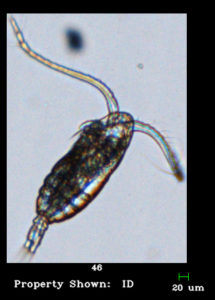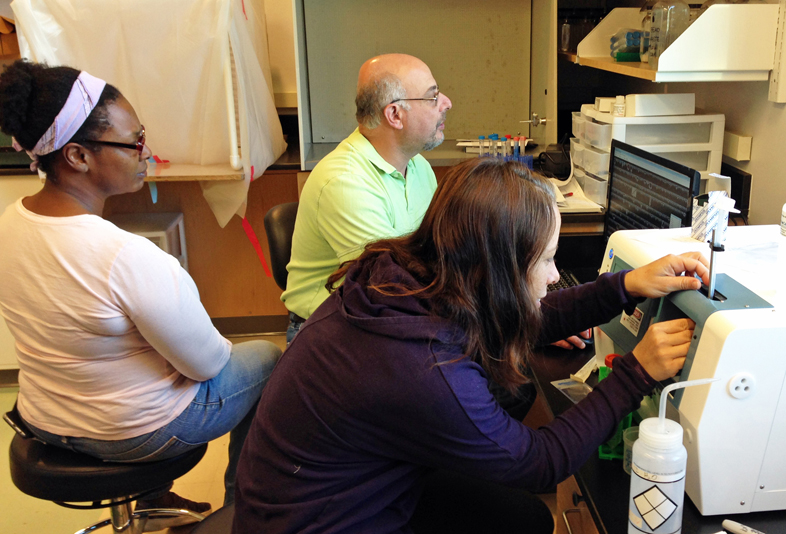Savannah, Ga. – A team of researchers from the University of Georgia Skidaway Institute of Oceanography has received a $226,557 grant from the National Science Foundation to acquire state-of-the-art imaging equipment to investigate microorganisms from the tiniest viruses to larger zooplankton. The equipment will be housed in UGA Skidaway Institute’s new Laboratory for Imaging Microbial Ecology, or LIME.

A copepod
Researcher Elizabeth Harvey leads the research team that also includes UGA Skidaway Institute scientists Julia Diaz, Marc Frischer, James Nelson and James Sanders.
The equipment will improve Skidaway Institute’s capability to conduct field and laboratory experiments by automating many viewing methods.
“Anyone who uses a microscope will tell you that it is both tedious and time consuming,” Harvey said. “This equipment will allow us to enumerate and analyze microbes and other planktonic organisms much faster, and will allow us to do more large-scale projects than we could in the past.”
Much of the equipment will also have imaging capability so researchers will be able to do more detailed measurements on the size and shape of the tiny organisms and how that might relate to the health of an ecosystem.
Marine microbes are an essential component of all marine ecosystems and they play central roles in mediating biogeochemical cycling and food web structure.
“They are the things that drive all other processes in the ocean,” Harvey said. “They play a really important role in the way nutrients, oxygen and carbon are cycled through the ocean. We care a lot about those processes because they impact our climate, fisheries and the ocean’s overall health.”

UGA Skidaway Institute researchers Tina Walters, Marc Frischer and Karrie Bulski practice running zooplankton samples on the FlowCam, a new instrument that is part of LIME.
he benefits of LIME will be shared beyond Skidaway Institute’s science team. Harvey envisions it as a regional center for microbial imaging, available to any other researchers who need the capability.
“Anyone is welcome to come here and get trained to use them,” she said. “They just need to contact me and we can make arrangements.”
Some of the equipment is already in place, while other pieces have not been delivered. Harvey anticipates all the equipment being functional by mid-2017.


